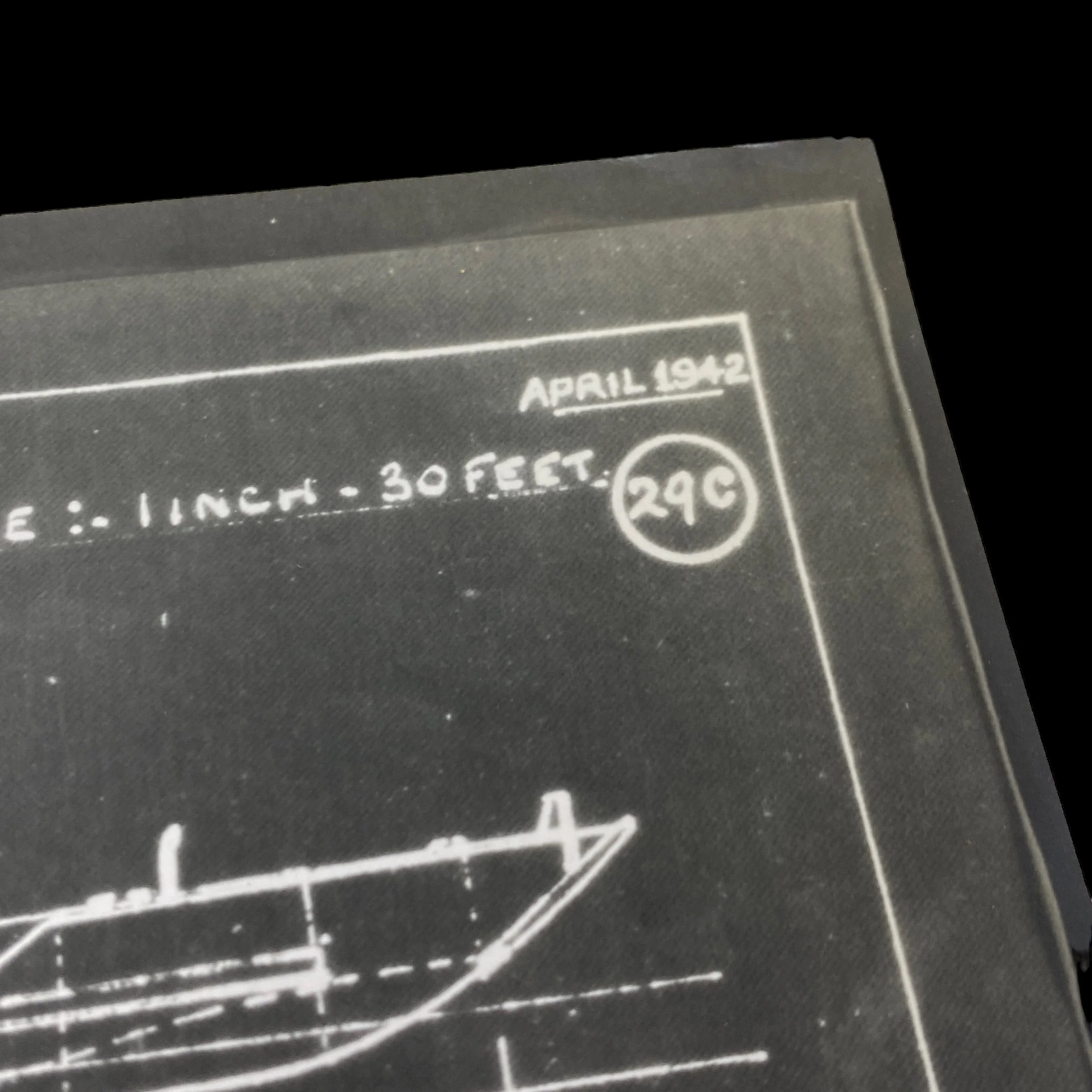RARE! Original WWII April 1942 Normandy D-Day British Landing Craft Tank Mark III Blueprint


















RARE! Original WWII April 1942 Normandy D-Day British Landing Craft Tank Mark III Blueprint
Comes with hand-signed C.O.A. and a full historical write-up
This incredibly rare and museum-grade original WWII British LCT Mark III blueprint diagram was used during the design, constriction, and repair of the LCT Mark III during World War II. Dated April 1942 this blueprint features detailed specs of the LCT during the design process. D-Day (June 6, 1944): The Normandy landings, a pivotal moment in the war, relied heavily on LCT Mk. III vessels to transport and land troops, tanks, and equipment on the heavily defended beaches of Normandy. These landing craft played a vital role in the success of the operation, allowing Allied forces to gain a foothold in Western Europe.
The British Landing Craft Tank Mark 3 (LCT Mk. III) played a vital role during World War II as an essential component of amphibious operations. These vessels were instrumental in the success of numerous Allied invasions and campaigns, contributing to the ultimate defeat of Axis powers.
The LCT Mk. III was developed in the early 1940s, during the early stages of World War II, when the British realized the need for specialized vessels to support amphibious operations. The strategic situation in the early years of the war required the ability to land large numbers of troops, vehicles, and supplies directly onto enemy-held shores. This need became apparent during operations such as the evacuation of Dunkirk in 1940 and the British-led Allied landings in North Africa in 1942.
Design and Development:
The LCT Mk. III was designed as a landing craft capable of carrying and unloading tanks and other heavy equipment directly onto enemy beaches. The design incorporated several important features that made it suitable for its intended purpose:
Capacity: The LCT Mk. III was designed to accommodate up to three Churchill tanks or a combination of other vehicles, troops, and supplies. Its large, flat deck allowed for easy loading and unloading.
Shallow Draft: The vessel's shallow draft made it suitable for use in various shoreline conditions, including beaches with obstacles and sandbars. This feature allowed the LCT Mk. III to reach beaches that were otherwise inaccessible to larger ships.
Stern Ramp: The vessel featured a hinged ramp at the stern, which could be lowered to allow tanks and equipment to drive directly onto the beach. This feature was critical for rapid offloading during combat operations.
Armament: LCT Mk. III vessels were typically armed with anti-aircraft guns and machine guns to provide defense against enemy aircraft and infantry during landing operations.
Significance in World War II:
The LCT Mk. III played a pivotal role in several crucial World War II operations, making it an essential asset for the Allies. Some of the most notable uses of these landing craft include:
Operation Torch (November 1942): During the Allied invasion of North Africa, LCT Mk. III vessels transported troops, tanks, and supplies, facilitating the successful landing and establishment of a beachhead.
D-Day (June 6, 1944): The Normandy landings, a pivotal moment in the war, relied heavily on LCT Mk. III vessels to transport and land troops, tanks, and equipment on the heavily defended beaches of Normandy. These landing craft played a vital role in the success of the operation, allowing Allied forces to gain a foothold in Western Europe.
Operation Dragoon (August 1944): LCT Mk. III vessels were again used during the Allied invasion of southern France, providing a means to transport troops and equipment to the French coastline.
Pacific Theater: These landing craft were also used in the Pacific theater of the war, aiding in the island-hopping campaigns against Japanese-held islands. The versatility and ability to navigate shallow waters made LCT Mk. III vessels invaluable in the Pacific.
Resupply and Logistics: Beyond the initial landings, LCT Mk. III vessels were crucial for logistical support, allowing the constant flow of troops, equipment, and supplies to the front lines. This capability played a significant role in maintaining the momentum of Allied offensives.
The success of the LCT Mk. III and its variants during World War II led to their continued use in the post-war period. These landing craft influenced the design of future amphibious assault vessels and remained relevant in various conflicts throughout the 20th century. Their importance in projecting military power from the sea continued to evolve with the development of larger and more advanced landing craft, ultimately leading to the modern amphibious assault ships used by the world's leading navies today.
In conclusion, the British LCT Mark 3, also known as the LCT Mk. III, played a critical role during World War II, enabling the Allies to conduct successful amphibious operations. Its design and versatility made it an invaluable asset for landing troops, tanks, and equipment on enemy-held shores. The legacy of the LCT Mk. III extends far beyond World War II, as it laid the foundation for modern amphibious assault capabilities and continued to influence naval strategy and doctrine in the years that followed.